About
Top Experiences
Type of Journey
Subscribe to newsletter and stay updated
Read about our travel expeditions, new destinations, new pictures, latest trip schedules
We have all heard tales from all across the world that speak of bravery, pride, honor, and courage. But is hearing them sufficient? Imagine how it would feel to be able to still sense those energies when you are in the same location where they took place. This is possible in Jaipur, Rajasthan! These incidents, conflicts, legends, and sacrifices are still felt in this place. The largest state in India, Rajasthan, with Jaipur as its capital. Rajasthan is the land of Kings, as the name says. The city of Jaipur was established on November 18, 1727, by Maharaja Jai Singh II, one of the most valiant Kings in history. The city was and continues to be one of the most populous in the nation. It is also believed that Jaipur was the first planned city to be created in India. Additionally, Jaipur is situated in the tourist-friendly Golden Triangle, which also includes Delhi, Agra, and Jaipur.
OVERVIEW
Location: Rajasthan
Nearest Airport: Jaipur International Airport
How to reach: By road / air/ train
Famous for: Palaces, forts, Gems & Silver Jewellery, traditional fabrics and handicrafts
Best time to visit: October to March
WHAT TO SEE
Amer Fort (Amber Fort),Nahargarh Fort
Jaigarh Fort,City Palace,Hawa Mahal,Jal Mahal
Jantar Mantar Observatory, Chowki Dhani
Birla Temple
Panna Meena ka Kund
Jhalana Leopard Safari Park
In the year 1727, Maharaja Sawai Jai Singh II founded the city of Jaipur. The city was made to look pink to welcome the Prince of Wales in 1878, earning it the moniker “Pink City.” It was a princely state under the British, thus after Independence, it was made the capital of Rajasthan.
Jaipur has a vibrant culture that reflects the art, architecture, and traditions of the city. Bandhani, Meenakari, Tarakashi, Block-printing, etc. are some of the famous arts. It is also famous for the ‘Ghoomar,’ ‘Kathak,’ and ‘Tamasha’ dance forms. Delicacies like ‘Missi Roti,’ ‘Dal Bati Choorma,’ ’Ghevar,’ etc. are extremely famous.
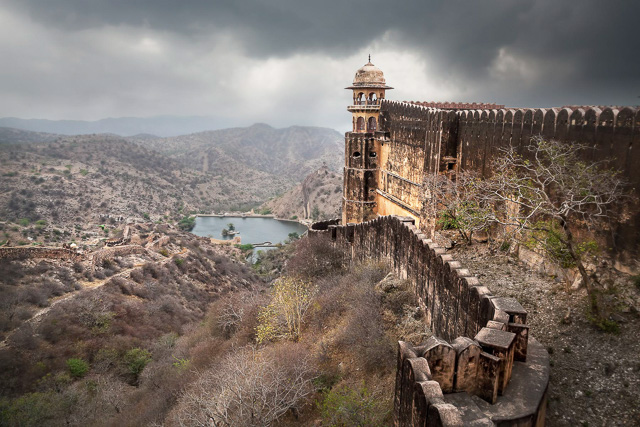
Places of Interest:
Amer Fort (Amber Fort): Being one of the most iconic forts of Rajasthan, Amer Fort lies amidst the stunning Aravali hills in Jaipur. Completed by Mirza Raja Jai Singh, the white marble and red sandstone add magnificence to this Jaipur palace. The high walls, the central building of the citadel, the dramatic backdrop of the Maota Lake, wall paintings, and the picturesque views of sunset and sunrise add to the timeless elegance of this fort.
Nahargarh Fort: Nahargarh Fort is the ideal place for you to get a picturesque view of Jaipur. Originally named Sudarshan Garh Fort, it was built by Jai Singh II for tightening the security of the area. It also acted as a safe shelter for the wives of the British during the Sepoy Mutiny of 1857. It also served as a famous picnic spot for the royal families during their summer excursions.
Jaigarh Fort: Located on the rocky Aravali hills, the Jaigarh Fort is one of the most stunning forts in Jaipur sightseeing. Built by Jai Singh II in the year 1726, it is also called the ‘Fort of Victory.’ The fort has thick walls of red sandstone that are governed by watchtowers. The water reserves, storage systems, and granaries inside the fort are exceptional examples of ancient science. It is also home to the largest cannon-on-wheels in the world or Jaivana.
City Palace: Built on the orders of Maharaja Sawai Jai Singh II, the City Palace is a fusion of Mughal and Rajput architecture. The main portion of this Jaipur palace comprises the Mubarak Mahal and the Chandra Mahal. Virendra Pol, Tripolia Gate, Udai Pol, and Jaleb Chowk are the four entrances to the palace.
Hawa Mahal: Popularly known as the ‘Palace of Winds,’ Hawa Mahal is one of the prime spots of Jaipur sightseeing. It has 953 jharokhas or small windows with complex latticework. The Palace resembles the crown of Lord Krishna, the Hindu God. The windows of the Hawa Mahal are designed in a way that a cool breeze always remains inside the place irrespective of the weather.
Jal Mahal: The Water Palace is one of the iconic palaces among the other Rajput Palaces. The Jal Mahal lies in the middle of the Man Sagar Lake and shows a fusion of Rajput and Mughal architecture. Being a red sandstone building of five floors, four floors of the Jal Mahal remain underwater. People visit the palace in traditional boats and get to see the stunning view of the Aravallis from the lake.
Jantar Mantar Observatory: The Jantar Mantar observatory consists of fourteen geometric devices that predict eclipses, measure time, and track the location of stars, and the movement of Earth around the sun. The largest instrument in this observatory is Samrat Yantra, and it was used to calculate time.
Birla Temple: The temple is located at the bottom of Moti Dungari Hill in Jaipur. The temple has white shining marble and three huge domes that represent the different approaches to religion. Lord Ganesh and the images of Lakshmi and Narayan are the attractions inside the temple.
Jhalana Leopard Safari Park: The Jhalana Leopard Safari Park houses around 20 leopards and is one of the best places to visit for wildlife lovers. You can also view a large variety of animals and birds apart from the leopards. The park will give you the feel of a Jungle Safari.
Albert Hall Museum: Initially, the Albert Hall Museum showcased the products of local craftsmen and artists. Currently, the collections have increased greatly and have brought it to an international level.
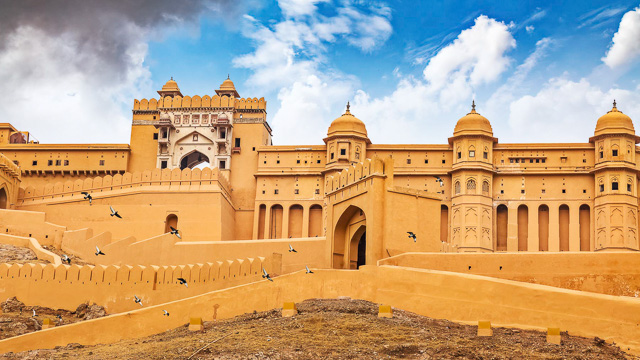
Nearby Attractions:
Samode Village: Lying 42 km away from Jaipur, Samode is a small village famous for its haveli and fort. Samode Palace is one of the major attractions of the village. Apart from that, the Camel Safari is also an excellent way to enjoy the thrill at Samode village.
Abhaneri Stepwell: Lying 95 km away from Jaipur, the Abhaneri Stepwell consists of 3500 narrow steps with more than 13 stories. Constructed during the Chauhan Dynasty between 800 AD and 900 AD, it is one of the prime attractions for tourists visiting Jaipur.
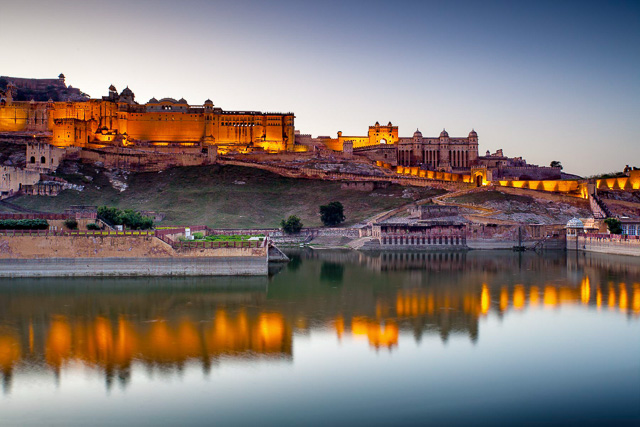
Other Attractions:
Light and Sound Show Amber Fort: The Light and Sound Show at Amber Fort showcases remarkable cultural performances with a marvelous representation coupled with music, light, sound, and folklore narratives. The view of the show is mesmerizing, and it is a must-see thing for all tourists.
Walled City Night Tour: The night view of the pink city is one of the most exciting things to experience in Jaipur. While touring the city in the evening, you can explore the culture and royal legacy. You can also enjoy a scrumptious dinner at a restaurant and enjoy a folk dance performance.
Hot Air Balloon Ride of Jaipur: The Hot Air Balloon Ride gives you a bird’s eye view of the beautiful pink city. At dawn, the Balloons lift off after a flight briefing and give you an hour flight full of peace and tranquility. You get to see the spectacular forts, Aravali Range’s hidden places, and various villages of Rajasthan.
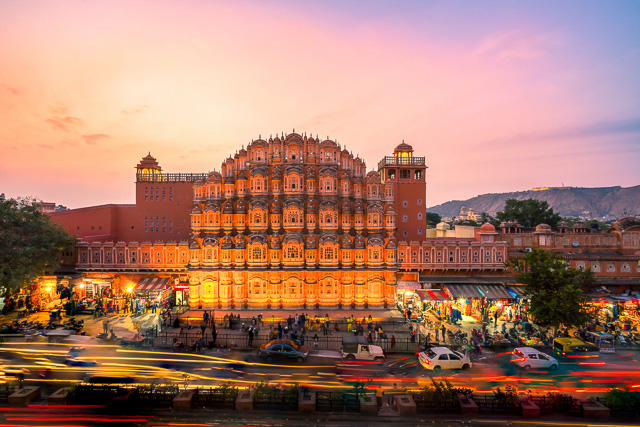
Samode Palace Lunch with Camel Ride: Known to be a beautiful palace, the food served at Samode Palace is the most authentic Rajasthani Food that you will eat. Surrounded by the beautiful interiors of the palace, you can have an elaborate lunch followed by an adventurous camel ride in the Samode Village.
Authentic Rajasthani Dinner with the Local Royal Family: Your dream of having dinner with the Royal Family can be fulfilled in Jaipur. The enjoyment and thrill of sitting with a royal family is a dream in itself, and therefore, visiting Jaipur will make you experience the joy of it.
Walking Tour of Old Jaipur Bazaar: If you want to have a look at the Real Jaipur, you need to take a walking tour of the bazaars of Old Jaipur. With streets full of the smell of spices, bangles, and sarees, the vibrant bazaars of Jaipur will make you experience the culture and beauty of Jaipur.
Heritage Walk of Old Jaipur City: A Heritage walk around Old Jaipur City will make you visit all the bazaars as well as the other tourist attractions. From trying the local delicacies of Jaipur to exploring the art and culture, a heritage walk will give you complete insights into the city.
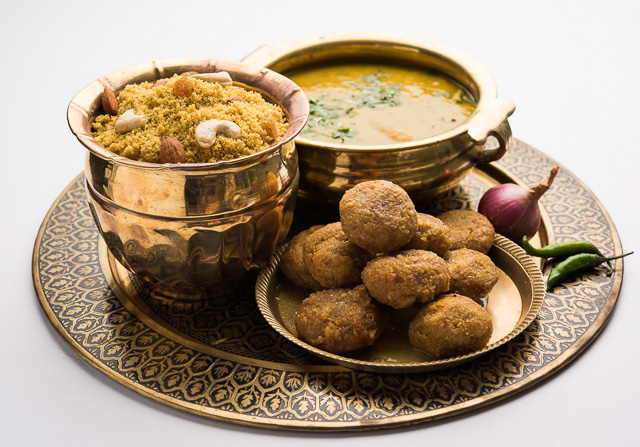
Cuisine:
You will be able to find all types of cuisines in Jaipur (Mexican, Italian, Chinese, etc), but when in the heart of Rajasthan you must try the local, traditional Rajasthani dishes like Gatte ki sabzi, Dal Bati Churma, Bajra roti, Bajra khichdi(ghat), Missi Roti, and KerSangri to name a few. And you must also finish with traditional mouth-watering desserts like Feeni, Ghevar, Gajak, Mawa Kachori, and Moong Thal. You will find the best quality and original variety for these at places like Chokhi Dhani, Rajdhani, Natraj, and other local restaurants.
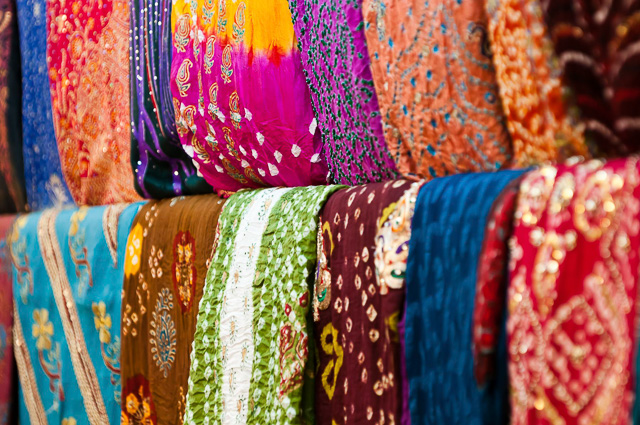
Shopping:
In Jaipur, you can find almost everything that you might want at the bazaar which is in the city center. There are separate areas/ lanes for each item like clothes, flowers, and jewelry. One of the famous items here is the Jaipuria Razai-a warm and cozy blanket that is lightweight and suitable for very cold to moderately cold temperatures. Another specialty of Jaipur is artificial jewelry which has beautiful miniature designs on it. You can also get a good deal by buying precious gems from Jaipur like tiger eye, lapislazuli, ruby, etc. These bazaars not only give one a great shopping experience but also a wonderful experience to see the local hidden life.
Johari Bazaar: The Johari Bazaar is one of the most commonly visited tourist spots in Jaipur and it is also considered a shopper’s delight. The market is famous for ethnic ornamental silver, gold, and gemstone jewelry of Rajasthan. The wide variety of exquisitely created handmade jewelry available at this bazaar will blow your mind.
Tripolia Bazaar: The Tripolia Bazaar is a traditional market that is very famous among tourists. It is famous for its traditional wear, embroidered garments for ladies, spectacular carpets with unique designs, and iron and brass items.
Nehru Bazaar: Nehru Bazaar is famous for its authentic Rajasthani craft items. Its bright blue pottery, vivid handicrafts, trinkets, and Rajasthani Juttis are loved by tourists from all over the world. It also sells mini-artifacts, knick-knacks, hair accessories, mirror-worked pen stands, artificial jewelry, and lac pens.
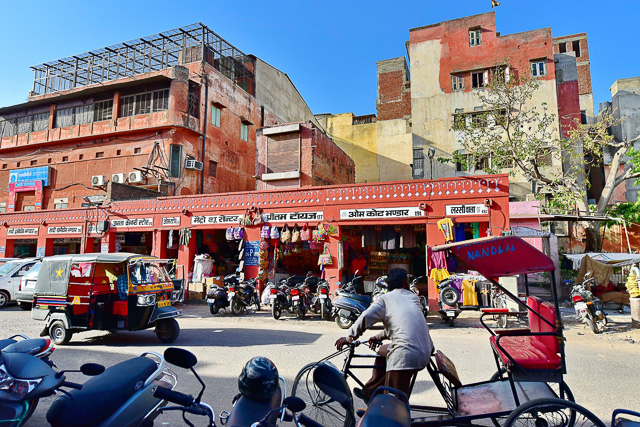
Where to Stay:
While visiting Jaipur, if you want to experience the old architectural highlights and ancestral lifestyle, you should stay in the heritage hotels of Jaipur.
Taj Rambagh Palace: Formerly the residence of the Maharaja of Jaipur, Taj Rambagh Palace is a luxurious hotel that features spa services as well as an indoor and outdoor pool.
The Oberoi Raj Vilas: Offering unique 5-star accommodation, the hotel has beautiful greenery, a pool, free on-site parking, and 3 dining options. The rooms also have access to free WiFi.
Taj Jai Mahal Palace: The hotel offers Indo-Saracenic architecture with Colonial-style interiors, an outdoor pool, fitness facilities, and a spa. The hotel is the best mix of culture and heritage.
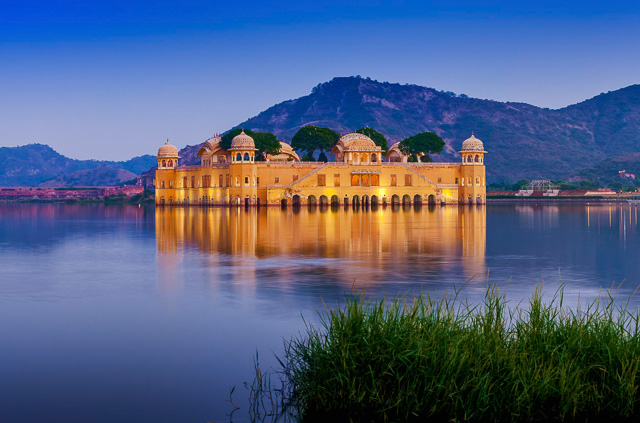
The Raj Palace: Reflecting the Mughal architecture, the hotel features exquisite interiors with crystal chandeliers and double-height ceilings. It also features a health club and a relaxing pool.
Sujan Raj Mahal Palace: This exquisite hotel offers free WiFi, 3 restaurants, multiple dining venues, an on-site bar, and free private parking.
Samode Haveli: The beautiful Samode Haveli is equipped with antique couches, painted arches, rich mosaics, air-conditioned rooms with a flat-screen cable TV, and a private bathroom with a bathtub.